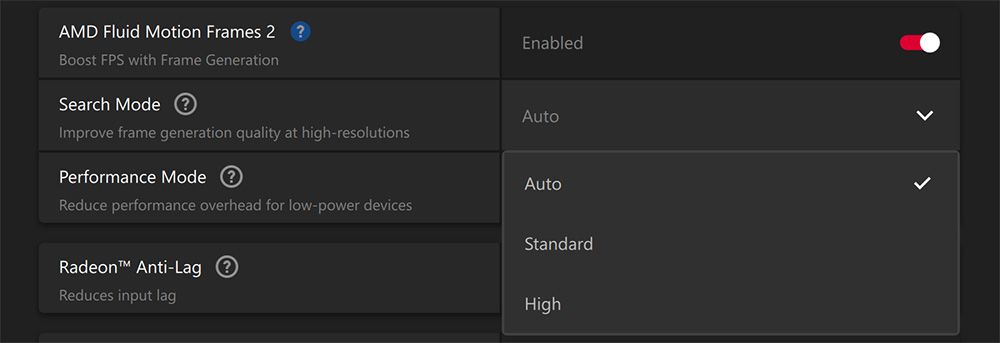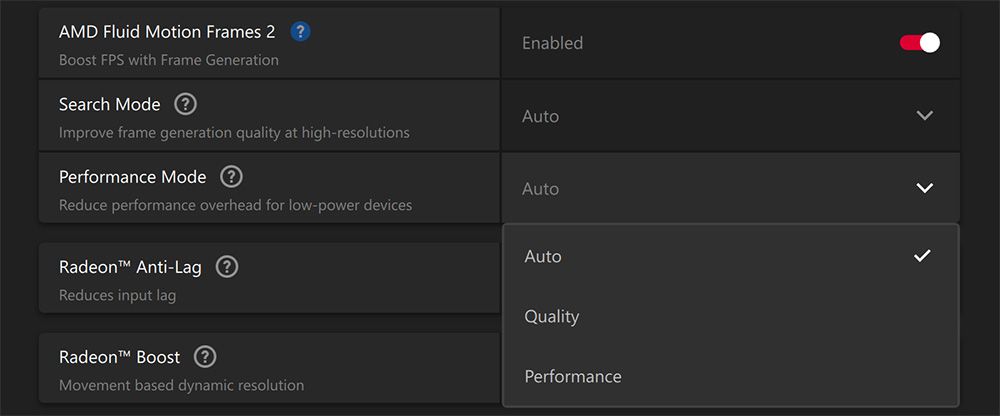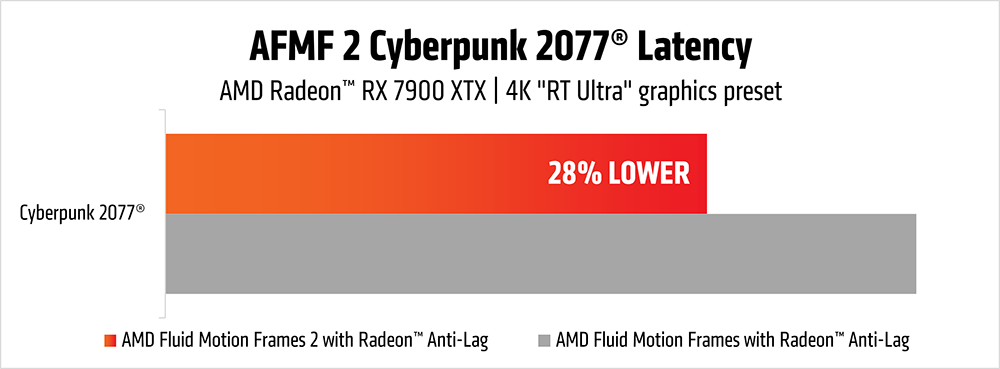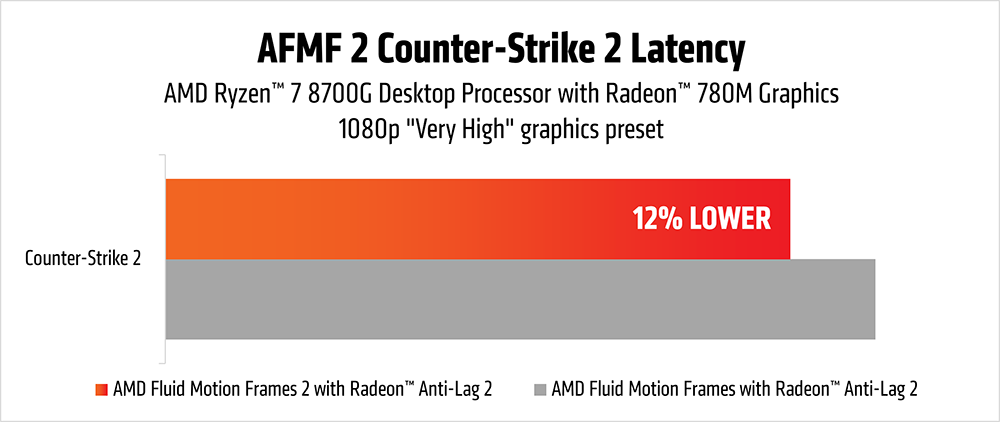AMD introduces a beta preview of Fluid Motion Frames 2, with 'AI-optimized enhancements for improved quality, lower latency, and better performance'
No, the frame generation algorithm doesn't use AI—it's just been optimised by it.

In January of this year, AMD updated its Adrenalin software for RX 7000 and RX 6000 series GPUs to include a driver-based frame generation system called AMD Fluid Motion Frames (AFMF), which didn't require any support from a game to use it. Now, six months on, AMD's coding wizards are back at it again, this time launching a preview version of AFMF 2.
So, what's new? Well, it's mostly about fine-tuning what was already there but reading through the dev blog on AFMF 2 suggests that quite a lot has been tweaked and twiddled with.
First up are some 'AI-optimized enhancements' in the form of a smoother fallback system, which temporarily disables AFMF 2 in high-motion scenes to preserve image quality and an updated frame generation algorithm. It's worth noting that, unlike Nvidia, AMD's frame gen tech doesn't use AI directly to do, just that AMD have used it to tweak the system.
Next up, the whole system is now far more adjustable. Up to now, AFMF has simply been an on-off toggle in the Adrenalin software, but now you can choose a resolution-appropriate fallback system (High for 1440p or greater, Standard for 1080p), and you can lower how much shader power is required to run the algorithm, by switching between Quality or Performance—the latter being aimed at chips with integrated Radeon GPUs, such as those in most handheld gaming PCs.
AMD has also reduced the amount of latency the use of Fluid Motion Frames adds to a game, claiming a 28% reduction in Cyberpunk 2077 and a 12% reduction in Counter-Strike 2. Lastly, AFMF 2 now works in games running in borderless windowed mode, as well as exclusive fullscreen, and it also supports OpenGL and Vulkan-powered games.
Actually, no. Lastly lastly, is the fact that if you enable Radeon Chill (an FPS limiter) after switching on AFMF 2, the former will prevent the FPS from going above your monitor's maximum refresh rate, helping to prevent screen-tearing.
That's an awful lot of changes but the important thing to ask here is, do they work? Is AFMF 2 better than AFMF 1? As AMD has only just released the preview drivers, I've not had long to test it out but gave Homeworld 3 a few runs, comparing the older system to the new one, with a Ryzen 9 7900 and Radeon RX 6750 XT.
The biggest gaming news, reviews and hardware deals
Keep up to date with the most important stories and the best deals, as picked by the PC Gamer team.




Homeworld 3 is a good game to test this with, as it has no internal support for frame generation and it's pretty CPU-limited in most scenarios. Without AFMF enabled, my test averaged 35 fps—that jumped to 66 fps with AFMF and 74 fps with AFMF 2. It was very smooth with AFMF 2 and I honestly couldn't spot any graphical oddities creeping in.
It's worth noting that if a game has its own FPS counter, it won't show the gains properly, as the game won't know about the interpolated frames. Just use the Adrenalin software to track any changes in performance.
I then ran through a few rounds of Counter-Strike 2 to see if the improved system does handle fast motion better. To my tired old eyes, it's certainly better—there's definitely less tearing going on—but I'm very slow at CS2 and my test rig only uses a 60 Hz 4K monitor, so it's not an in-depth check of the improvements.
If you have a Radeon RX 7000 or RX 6000 series graphics card, or an APU with an integrated Radeon 700M GPU, then it's well worth downloading the preview drivers and giving AFMF 2 a whirl. You might be surprised by how good it actually is.
Best CPU for gaming: Top chips from Intel and AMD.
Best gaming motherboard: The right boards.
Best graphics card: Your perfect pixel-pusher awaits.
Best SSD for gaming: Get into the game first.

Nick, gaming, and computers all first met in 1981, with the love affair starting on a Sinclair ZX81 in kit form and a book on ZX Basic. He ended up becoming a physics and IT teacher, but by the late 1990s decided it was time to cut his teeth writing for a long defunct UK tech site. He went on to do the same at Madonion, helping to write the help files for 3DMark and PCMark. After a short stint working at Beyond3D.com, Nick joined Futuremark (MadOnion rebranded) full-time, as editor-in-chief for its gaming and hardware section, YouGamers. After the site shutdown, he became an engineering and computing lecturer for many years, but missed the writing bug. Cue four years at TechSpot.com and over 100 long articles on anything and everything. He freely admits to being far too obsessed with GPUs and open world grindy RPGs, but who isn't these days?


